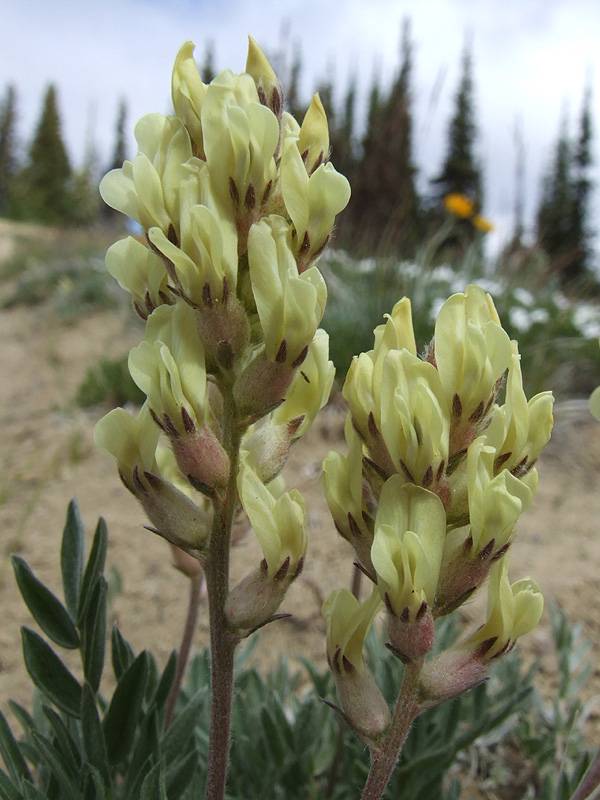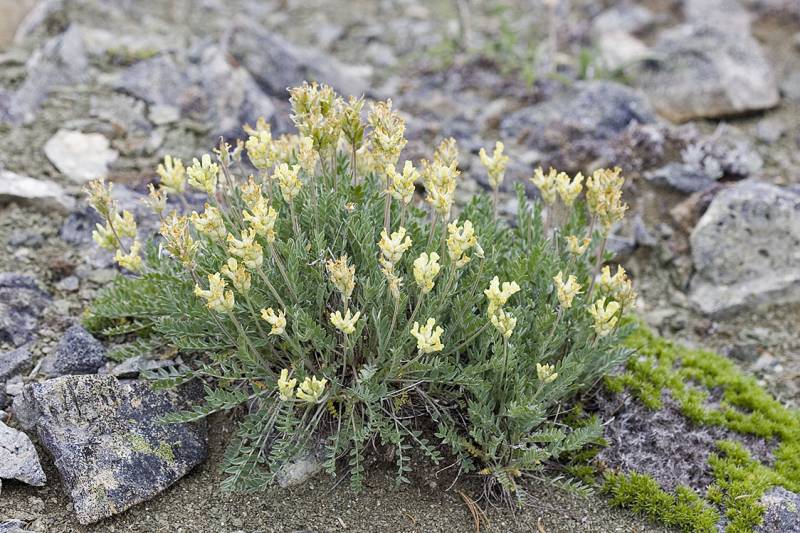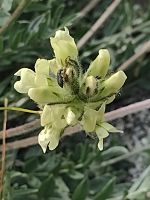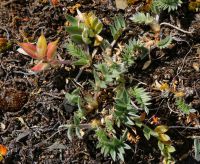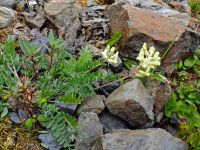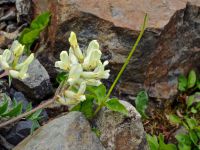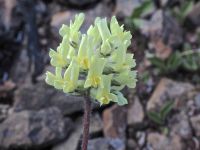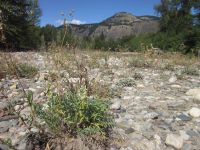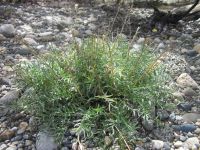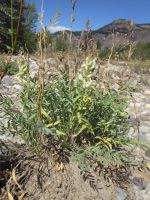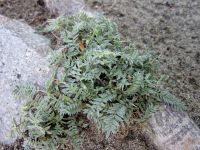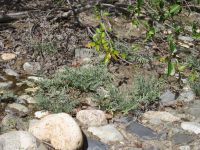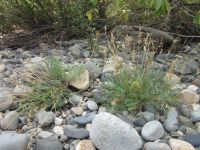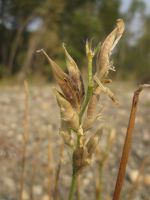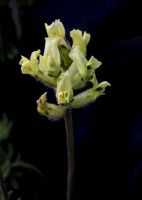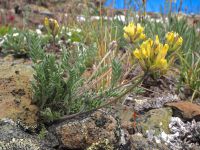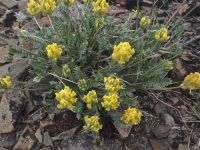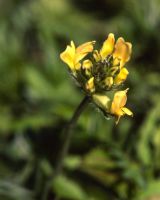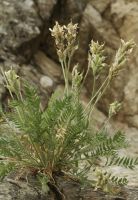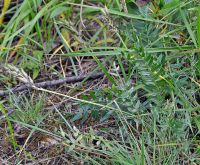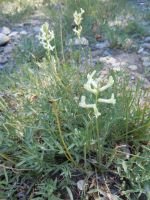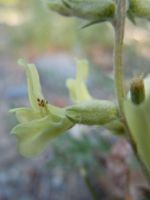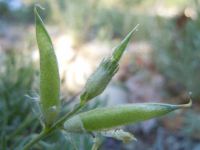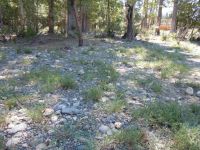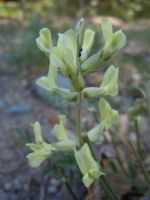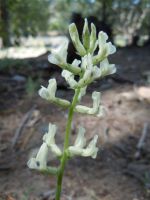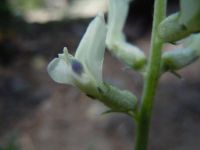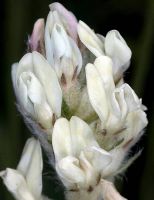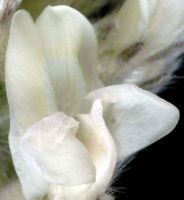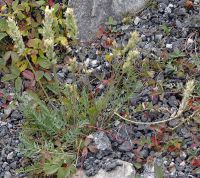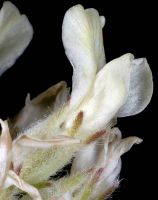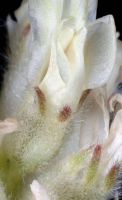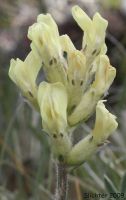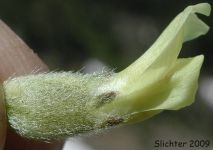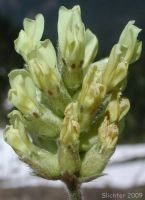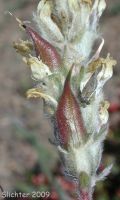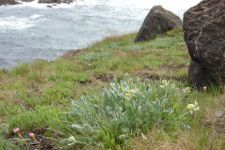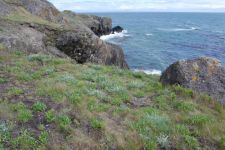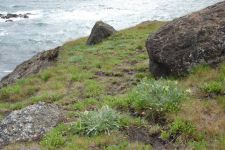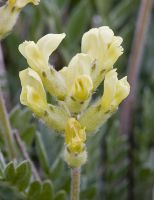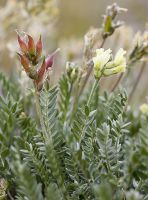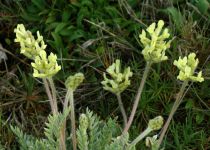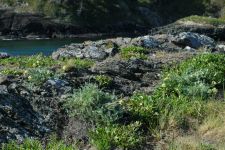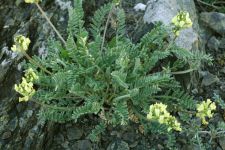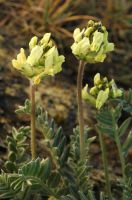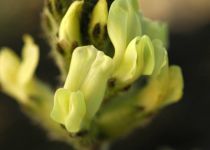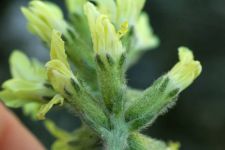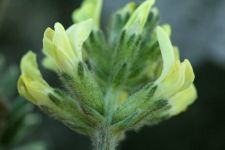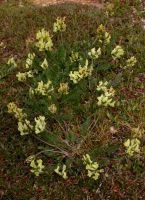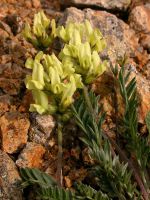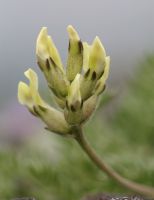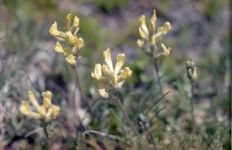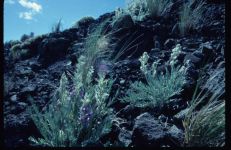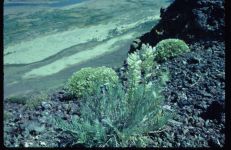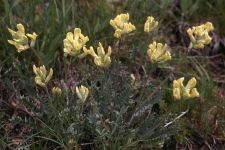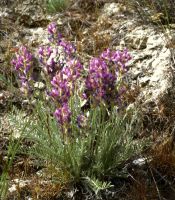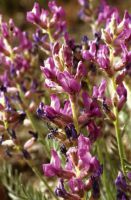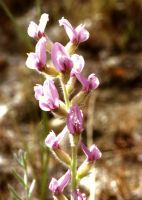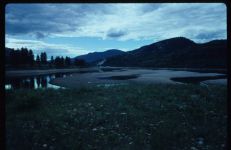Distribution: Occurring on both sides of the Cascades crest in Washington; Alaska to Oregon, east across the northern U.S. and Canada to the Atlantic Coast.
Habitat: Forest openings and rocky balds from sea-level to the alpine.
Flowers: May-July
Origin: Native
Growth Duration: Perennial
Conservation Status: Endangered in Washington (WANHP)
Pollination: Bumblebees
Tufted, extremely variable, grayish or greenish perennial, the leaves and peduncles attached near the base, 5-30 cm. tall.
Leaves odd-pinnate, 3-20 cm. long; leaflets 5-41, 5-30 mm. long, narrowly lanceolate, acute; stipules membranous, 5-15 mm. long, attached to the petiole about half their length, hairy on the margins and lower surfaces.
Inflorescence of spike-like racemes on long peduncles, 5- to 40-flowered; flowers 10-20 mm. long, white to yellowish, the keel sometimes purplish; calyx gray- to black-hairy, half the length of the corolla, the 5 teeth linear-oblong, 1-4 mm. long; banner erect, wings longer than the keel, which has a beak 5 mm. long.
Pod 1-2.5 cm. long, almost 2-celled by the intrusion of the upper suture.
Publication: Astragalogia 26, 74 (ed. qto.); 20, 59 (ed. fol.). 1802.
-
var. columbiana – slender crazyweed
 Occurring east of the Cascades crest in the north-central and northeastern regions of Washington; British Columbia to northern Washington, also in western Montana.
Occurring east of the Cascades crest in the north-central and northeastern regions of Washington; British Columbia to northern Washington, also in western Montana. -
var. cusickii – Cusick's field crazyweed, Cusick's field locoweed
 Occurring east of the Cascades crest in north-central and central Washington; British Columbia to Oregon, east to the Rocky Mountains.
Occurring east of the Cascades crest in north-central and central Washington; British Columbia to Oregon, east to the Rocky Mountains. -
var. spicata – yellow-flowered crazyweed, yellow-flowered locoweed
 Occurring on both sides of the Cascades crest in Washington; Yukon Territory to Washington, east to the Rocky Mountains and northern Great Plains.
Occurring on both sides of the Cascades crest in Washington; Yukon Territory to Washington, east to the Rocky Mountains and northern Great Plains. -
var. wanapum – Wanapum crazyweed, Wanapum locoweed
 Endemic to the Saddle Mountains of Grant County in Washington.
Endemic to the Saddle Mountains of Grant County in Washington.
PNW Herbaria: Specimen records of Oxytropis campestris in the Consortium of Pacific Northwest Herbaria database.
WA Flora Checklist: Oxytropis campestris checklist entry.
OregonFlora: Oxytropis campestris information.
E-Flora BC: Oxytropis campestris atlas page.
CalPhotos: Oxytropis campestris photos.
USDA Plants: Oxytropis campestris information.

